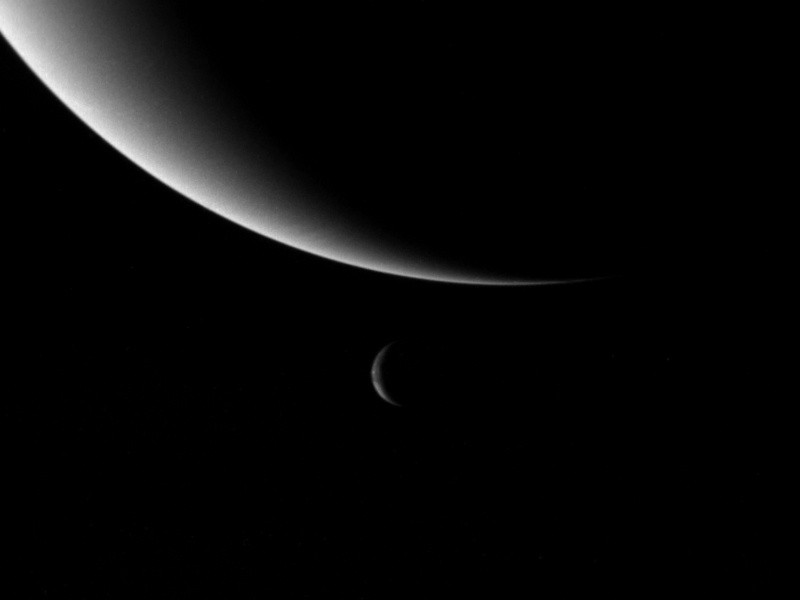Venus has recently gotten a lot of attention since NASA wants to send two mission to Earth's evil twin in about 30 years. Unfortunately, one mission to Jupiter's volcanic moon Io and another mission to Neptune's largest moon Triton were rejected by the space agency. Here's why they rejected it.

Jupiter Io Moon: Exploring The Bizzare Celestial Object
Io is an odd moon. It's even more unusual among strange moons, to begin with. Jupiter's innermost moon orbits just 217,479 miles (350,000 kilometers) above the planet's cloud tops. According to a YouTube video, Io has an intense heating mechanism. That makes Io the solar system's most volcanically active moon, with over 400 volcanoes, according to the study, "Lava Lakes on IO: Observations of IO's Volcanic Activity From Galileo Nims During the 2001 Fly-Bys."
Given that we live in a world with plenty of volcanoes, people think they would have a solid understanding of where all this heat is coming from. But in fact, scientists still have a lot of questions about how it operates.
The proposed Io Volcano Observer (IVO) was supposed to fly over the moon several times and employ various instruments to map activities on and below the surface. By gathering data on the moon's magnetic and gravitational fields, IVO would help scientists understand how Io's heat is generated and lost. In addition, it was designed to take movies of massive lava eruptions and analyze the gas and dust on the moon.
All of this information is significant. NASA said this type of intense activity on Io is thought to be a key part of planetary creation and evolution. Scientists can learn more about how planets and moons came to be by understanding the processes that drive change on Io.
Ice Giants: Neptune, Uranus Moon
Uranus and Neptune are the solar system's least researched and understood planets. Still, they are home to some of the strangest cosmic behaviors. For example, Uranus has such a large axial tilt - the angle between its axis of rotation and the plane in which it orbits the Sun - that it spins on its side. This is supposed to be the outcome of a massive collision in the solar system's history, according to one report.
Meanwhile, NASA said the intriguing Triton, Neptune's sole big moon, orbits backward around its parent planet. The strange orbital configuration isn't the only oddity. Triton's orbital plane is 23 degrees off from Neptune's. The study, "Neptune's Capture of Its Moon Triton in a Binary-Planet Gravitational Encounter", claims the moon drifted to Neptune from the Kuiper Belt, a region beyond Neptune's orbit that is filled with frozen remnants from the solar system's origin.
The study, "A Model of Triton's Atmosphere and Ionosphere," also claims that Triton has an active ionosphere, a layer of charged particles in its atmosphere that is 10 times more active on any other moon. It is classified as a dynamic and constantly changing surface and could be covered in nitrogen snow. Cryovolcanoes - geysers spouting ice and gas up to 8 kilometers high - were discovered when NASA's Voyager 2 photographed the moon, possibly indicating an underground ocean.
The projected Trident mission would have looked into all of these unusual aspects of the moon. It presented a three-pronged technique for measuring Triton's magnetic field using sensors. First, it would have detected the presence of a subterranean ocean and its structure. Using the sunlight reflected from Neptune, high-resolution infrared cameras would have allowed the spacecraft to photograph the whole surface, revealing to scientists what had changed since the last visit in 1989. Finally, the spacecraft would have attempted to figure out why Triton's surface is still so dynamic and young.
Trident and IVO were ultimately defeated by the Venus missions. Exploring the further limits of the solar system or seeing the huge volcanoes of Io would have been amazing.
However, Venus is a fascinating planet with its own set of secrets and promises. Two space missions will instead fly to Venus, the Davinci, and Veritas which have been awarded $500 million for a launch between 2028 and 2030.
Check out more news and information on Space on Science Times.












